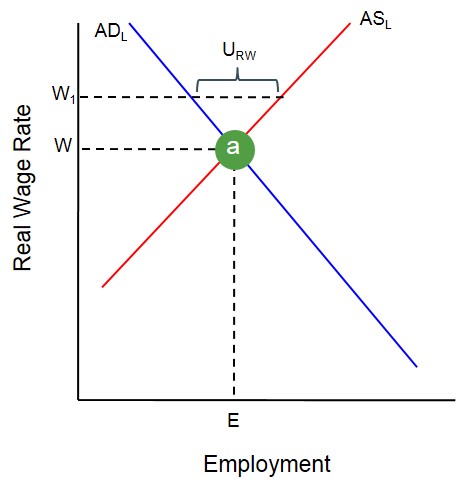Unemployment that occurs when labour market imperfections preserve a higher real wage rate than the equilibrium real wage rate.
Below is a diagram to show the labour market in disequilibrium and how this type of unemployment persists. In this instance, the wage rate has been pushed up to W1 and this has caused the supply of labour to rise as workers have a greater incentive to supply more hours of labour, as the reward per hour of work is greater. However, the demand for labour falls as firms have less incentive to employ workers at a higher wage rate and therefore the divergence between the supply and demand for labour creates this form of unemployment. This type of unemployment is normally created due to the imposition or increase of a national minimum wage rate which is fixed above the prevailing wage rate.

